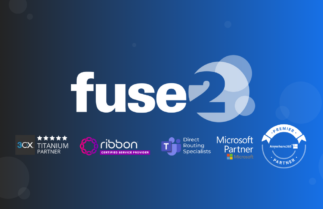
First off, you might be wondering – do I even need a UC roadmap?
Well, the fact is that after hearing from many businesses over the last year, the Unified Communications landscape has changed for everyone. Companies that Comms Resellers and Service Providers support are encountering a seismic shift in the markets they serve, especially around team productivity and customer behaviour. Having a clear strategy in place to move with the market and available technology is key to growth in this challenging trading environment.
The last year, like that before, has seen the landscape of traditional Voice and Unified Communications revolutionised by global influences, such as:
- Covid and remote working
- The great resignation
- Climate change
- Increased digitisation of consumer habits
All these factors mean that businesses are reconsidering the tools and processes they use to maximise productivity, increase employee satisfaction, reduce carbon footprint and make customer communication central to everything they do.
If business customers are thinking about a strategy to meet these challenges, then shouldn’t Service Providers and Resellers be doing the same in their propositions to that market?
VoIP is not enough
Going back 5 or 10 years, SIP Trunking or Hosted VoIP was a compelling proposition on its own. Many businesses had sunk investment into assets, such as physical PBXs, that needed to be maximised financially. Unified Communication tools were still mainly focused on the classic PBX feature-set with a VoIP flavour.
Since then, however, the “cloud-adoption” movement has gathered pace, and businesses are not as opposed to shedding old infrastructure to unlock new innovations.
Cloud-based UC has enabled a new way of working across global teams, collaborating without borders and communicating with ease. The pandemic has accelerated this movement at a pace that was unsurprisingly not predicted by analysts.
Right now, remote working is no longer a “perk” and instead, table stakes for any staff attraction or retention policy. That means that processes and the technology that support them needs to change at a rapid pace. This is something that only the Cloud can do, where software updates and new features are delivered seamlessly and at regular intervals to meet growing demands from collaborative teams.
Seen to be Green
In the world of omnipresent social media and environmental campaigning, carbon credentials are often in the public domain. How many flights a company takes or whether teams travel to attend meetings is open to scrutiny from customers and the media. Again, businesses want to cut out the negativity and adopt a more flexible transport and carbon expenditure policy. In many cases, companies can also now be financially penalised for their environmental impact.
Whether it’s cutting down on unnecessary journeys or removing power-hungry hardware appliances from basements and datacentres, companies are looking for ways to reduce waste, power budgets and other legacy business costs.
Just as companies don’t try to produce their own electricity, they are also asking whether they should be running their own UC infrastructure internally, so choosing a cloud communications provider now seems as natural as choosing an electricity provider.
The environment, and carbon production, in particular, is now a regular topic at board meetings, meaning those stakeholders are going back to their teams and demanding a greener policy. You can be confident that 2022 will see an increase in the use of remote collaboration tools, such as Microsoft Teams, in order to meet those management and shareholder demands.
Footfalling fast
The growing digital economy and ongoing pandemic have come together to cause the perfect storm, transforming the high street faster than ever. According to the British Retail Consortium, for the whole of 2021, Total UK footfall was down 33.2% (Yo2Y) from pre-pandemic levels.
Whilst physical flagship retail stores still have their place; online consumer behaviour means that most of these businesses’ sales and distribution models are unrecognisable from those a decade ago.
This means that the businesses who will ride out the storm need to keep up with their most innovative competitors. However, customer service is often the first casualty when a company decides to make the E-commerce shift. Again, not having the appropriate systems and processes in place means that businesses cannot transform their old sales and service model efficiently into “digital”. Invariably, this leads to customer dissatisfaction and revenue decline unless their trusted Service Provider can educate and work with them on that transformation.
Sadly, many consultancies use “digital transformation” as an excuse to charge exorbitant fees out of reach for many small or mid-sized businesses. However, the cost to transform customer service from physical to digital needn’t be only for the deepest enterprise pockets. Contact Centre technology that was previously limited to multi-national businesses is now accessible to smaller companies, with a price to suit. How has this happened?
Contact is in the Cloud
The majority of consumers today are not only digitally-native but also unconsciously cloud-native. Twitter, Facebook, LinkedIn and Instagram – none of these applications run on servers in the basements or data centres of businesses, but they process extraordinary amounts of bandwidth. Real-time voice and video, instant messaging and high-quality streaming are all handled effortlessly by combining modern Cloud platforms and faster Connectivity, usually wirelessly via Mobile or WiFi.
The days are gone of IT administrators refusing to put communications in the Cloud because of bandwidth or latency concerns. The distribution of workforce and customer base means that it’s now impossible to “move infrastructure closer to users” without utilising the Cloud.
Of course, underneath the Cloud are just servers that might have historically run individual applications. However, thanks to improved technology in virtualisation, software applications and network connectivity, almost any application can and should be run from the Cloud.
Today, advances in cloud-based communication mean that Contact Centre technology has now been democratised, allowing almost any business access to Enterprise-grade customer contact management. So now, SMBs can have a Contact Strategy of their own and will be looking for a Service Provider to enable this at an affordable price.
Thankfully, Service Providers and Resellers can now become Cloud-native UC and Contact specialists without investing heavily in infrastructure or minimum commitments – again, thanks to the democratisation of Cloud Communications. With products like Direct Routing for Microsoft Teams and Anywhere365, companies can completely transform how they operate and meet the rapidly changing needs of their customers and our environment.
How can I get started?
Fuse2 provides seamless Voice, Connectivity and Cloud communications solutions to help modern businesses operate at amazing levels of productivity and efficiency.
With a global network containing multiple, diverse points of presence and the highest degree of resilience, Fuse2 customers can take advantage of the latest communications technologies anywhere in the world and with flexible pricing and incredible uptime.
Talk to Fuse2 today and learn how easy it could be to build a UC roadmap for 2022 and beyond.






